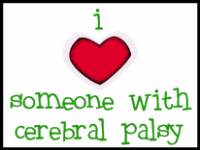
FRIDAY FACTS! Welcome to FRIDAY FACTS! here on the www.knowledgesafari.com blog.
Each Friday we aim to shine the light on a new area of special needs in order to learn and raise awareness. This week the spotlight is on Pediatric Stroke.
The following information is taken from The American Stroke Association. www.strokeassociation.org
Pediatric Stroke
The following information is taken from The American Stroke Association. www.strokeassociation.org
Pediatric Stroke
What causes ischemic stroke in children?
A common cause of ischemic strokes is that a blood clot forms in the heart and travels to the brain. This can be caused by congenital heart problems such as abnormal valves or infections. In these cases children may need surgery or antibiotics.
Sickle cell disease is a blood disorder that’s associated with ischemic stroke. In sickle cell disease, the blood cell can’t carry oxygen to the brain, and blood vessels leading to the brain may have narrowed or closed. About 10 percent of children with sickle cell disease suffer a stroke1. There is a high risk of repeat strokes, but this can be reduced by blood transfusion.
Finally, ischemic strokes can be caused by trauma that injures large arteries and causes a loss of blood flow. For instance, a large artery might be injured when a child has a neck injury.
What causes hemorrhagic stroke in children?
When a blood vessel on or in the brain ruptures, blood flows into brain areas where it’s not supposed to go. It may pool in brain tissues, resulting in a blood clot. Also, because the vessel is ruptured, blood isn’t transported where it should go. As a result, the brain is deprived of oxygen, and this may lead to permanent brain injury. Hemorrhagic strokes are most often caused by rupturing or weakened or malformed arteries known as AVMs (arteriovenous malformations). The risk of hemorrhage is higher with certain illnesses such as hemophilia.
Will my child get better?
Recovery from stroke is different with each child. Prompt medical treatment and rehabilitation
therapy can maximize recovery. In general, most younger people will recover more abilities than older people. Children often recover the use of their arms and legs and their ability to speak after a stroke.
What are the effects of stroke in children?
Hemiparesis (weakness on one side of the body), or hemiplegia (paralysis on one side of the body).
One-sided neglect (unilateral neglect), which causes the stroke survivor to ignore or forget their weaker side.
Aphasia (difficulty with speech and language), or dysphagia (trouble swallowing).
Decreased field of vision and trouble with visual perception.
Loss of emotional control and changes in mood.
Cognitive changes or problems with memory, judgment and problem-solving.
Behavior changes or personality changes, improper language or actions.
Other Resources:
www.lovethatmax.blogspot.com
www.family-live-love-laugh.blogspot.com
If you blog about this topic or have a referral – please leave us a link in the comment section.
COUNTING DOWN TO OUR LAUNCH ….11 DAYS TO GO!
Join us on Facebook: www.facebook.com/KnowledgeSafari
Join us on Twitter: www.twitter.com/KnowledgeSafari































3 comments:
Thanks for posting this! My five - year - old is also a stroke survivor. Unfortunately, many people - including medical professionals - are still unaware that children can have strokes. Again, thanks for helping to spread the word.
I double Jo's thanks for posting this—it really is important to raise awareness about pediatric stroke. Until I had a baby who had a stroke, I never even KNEW babies/kids could have a stroke.
Thanks Jo and Ellen! Glad we could help raise some awareness!
Post a Comment